
November 13: Updated with final wave of PSAT scores.
College Board released scores in three waves depending on when students took the PSAT. We have now received scores summaries for all three waves. It is possible that some late scores will still dribble in, but we are not expecting any changes. The results point to a strong upward trend in cutoffs for the class of 2026. You are welcome to jump to the table of estimates below, but we encourage students and families to read more about how we came to those estimates. For more information on the National Merit Program, in general, you may want to read Compass’s National Merit Scholarship Program Explained. If you want to browse almost two decades’ worth of cutoffs, you can find them in Compass’s National Merit Historical Cutoffs.
What is a Semifinalist Cutoff?
Each year almost 17,000 juniors are named Semifinalists in the National Merit Scholarship Program and continue on in the hopes of being one of the 15,000 Finalists and, eventually, one of the 7,500 scholarship recipients. The score needed to qualify as a Semifinalist varies by state and is known as the “cutoff.” Every student scoring at or above the Semifinalist cutoff qualifies. The cutoff is not based on a student’s overall PSAT score but on the Selection Index. The Selection Index is listed on a student’s PSAT score report. It can be calculated by doubling the ERW score, adding the Math score, and then dividing the sum by 10. For example, a 720 ERW / 730 M would have a Selection Index of (720 x 2 + 730)/10 = 217. For the class of 2025, cutoffs ranged from 208 to 223.
What is a Commended Student Cutoff?
If you performed well on the PSAT but do not qualify as a Semifinalist, you have the opportunity to be named as a Commended Student. Unlike the Semifinalist cutoffs, the Commended cutoff is set nationally. For last year’s class it was 208. Approximately 36,000 students are named Commended Students each year.
Why does Compass believe that we are likely to see cutoffs, as a whole, go up?
College Board releases very little data about score distribution. The number of top scorers is the most critical piece of information that we get this early in the process. While we do not know the number of students scoring at a particular Selection Index, we do know the number of students scoring in the 1400-1520 range, which roughly correlates to Selection Indexes of 210-228. The class of 2026 ranks 4th in the ten years since the PSAT scoring was overhauled, and this year sees the highest ever percentage of top scores. The number of Semifinalists and Commended students are capped, so cutoffs are likely to rise. But not all cutoffs. The numbers we have seen are at the national level and there is always churn at the state level. What we believe, however, is that more cutoffs will go up than down.
There is a good correlation between the 1400-1520 band of students and the Commended Student score. We believe that the Commended cutoff will come in between 209 and 211, with a 210 being most likely. Based on our historical archive of Semifinalist and Commended cutoffs, we believe that the average Semifinalist cutoff will go up this year.
Will I find out my status right away?
No. In fact, students don’t learn of Semifinalist status until September of senior year. Compass tracks data on current year performance and historical records to provides estimates and updates between PSAT score release and the Semifinalist announcements. Last year — the first year of the digital PSAT — saw a noticeable uptick in scores. Only one state — South Dakota — saw a lower cutoff versus the previous year’s. Was this a onetime quirk? Based on early results for the class of 2026, we do not believe that it was. The upward trend — whether due to the new test format, recovery from COVID-era learning loss, or other factors — appears to be continuing.
One mistake students make is thinking that the cutoff for one year will be the same in the next year. Cutoffs change every year, sometimes by as much as 5 or 6 points (granted, that’s unusual). Compass emphasizes an Estimated Range, which is likely to include the ultimate cutoff. Within that range, we do provide our Most Likely. That score represents our best estimate based on the known factors, but there are many unknown factors. Most of our PSAT performance data are for national results. So we can usually peg the Commended cutoff within a point or two. States, however, can move in different directions. More Alaskan students may test this year. Some strong Rhode Island prep schools may have decided to stop offering the PSAT. A COVID outbreak in Montana could mean more students using Alternate Entry and entering the competition using SAT scores. Below is a table that shows how many states in each of the last 17 years saw increases, decreases, or no change. There has never been a year where even half of all state cutoffs remain unchanged.
The chart below divides the 50 states into those that saw increases (blue), those that remained unchanged (gray), and those that saw declines (red).
Historically, a change in cutoff is more likely than not. Over the decade from 2015 – 2024, Semifinalist cutoffs remained unchanged only about one-third of the time.
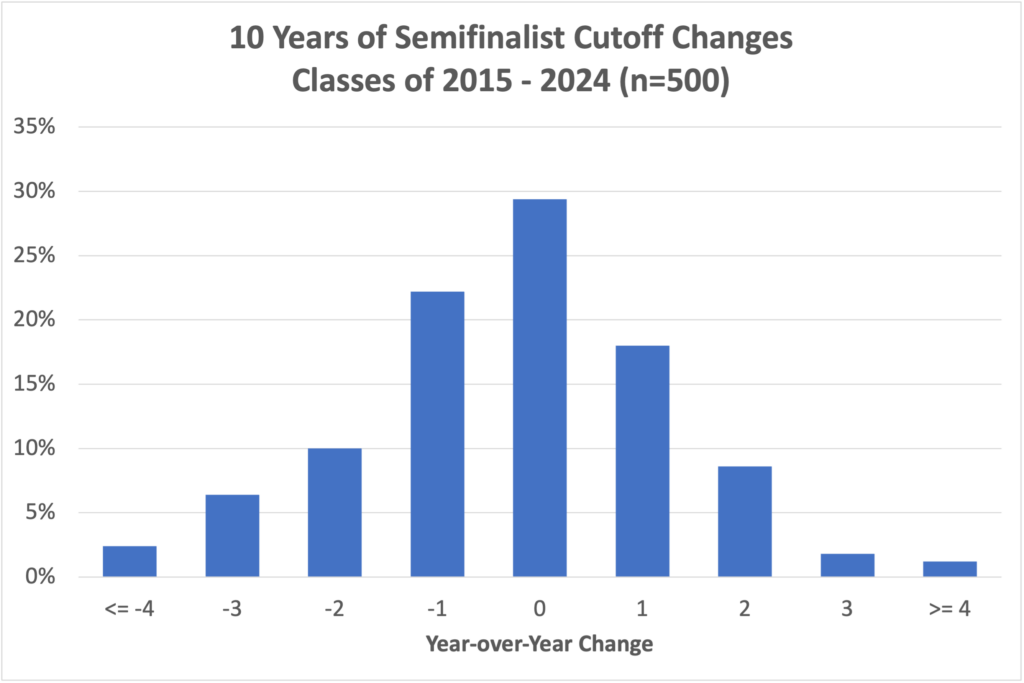
We believe that a table of results from this class will skew to the right.
Small states have more volatile cutoffs than large states, but there can be surprises across the board. The PSAT had a significant overhaul in scoring in 2017. If we look at the minimum and maximum cutoffs during the 9-year period from then until the class of 2025, we see that the 13 largest states (about 100,000 or more high school graduates) average a 2.8-point differential. New Jersey has a 1-point differential, since its lowest cutoff is 222 and highest is 223. The smallest states (fewer than 30,000 graduates) have a 6.2 point differential. Alaska has been as low as 208 and as high as 217! The medium-sized states average a 5-point difference between minimum and maximum.
Here are Compass’s current estimates for Semifinalist cutoffs for the class of 2026:
State | Class of 2026 Estimated Range | Class of 2026 Most Likely | Class of 2025 (Actual) | Class of 2024 (Actual) | Class of 2023 (Actual) | # of 2025 Semifinalists |
|---|---|---|---|---|---|---|
| Alabama | 210 - 216 | 214 | 212 | 210 | 212 | 267 |
| Alaska | 210 - 216 | 214 | 214 | 209 | 210 | 36 |
| Arizona | 215 - 220 | 218 | 217 | 216 | 214 | 401 |
| Arkansas | 210 - 215 | 213 | 213 | 210 | 210 | 134 |
| California | 220 - 223 | 222 | 221 | 221 | 220 | 2103 |
| Colorado | 216 - 221 | 218 | 218 | 216 | 217 | 272 |
| Connecticut | 220 - 222 | 221 | 221 | 221 | 221 | 177 |
| Delaware | 218 - 221 | 220 | 219 | 219 | 218 | 43 |
| District of Columbia | 222 - 224 | 223 | 223 | 223 | 223 | 47 |
| Florida | 216 - 220 | 218 | 217 | 216 | 216 | 972 |
| Georgia | 217 - 221 | 219 | 218 | 217 | 218 | 624 |
| Hawaii | 215 - 220 | 218 | 217 | 217 | 215 | 74 |
| Idaho | 212 - 217 | 214 | 213 | 211 | 215 | 102 |
| Illinois | 218 - 222 | 220 | 220 | 219 | 219 | 738 |
| Indiana | 214 - 219 | 217 | 217 | 216 | 214 | 304 |
| Iowa | 211 - 217 | 214 | 212 | 210 | 212 | 156 |
| Kansas | 213 - 219 | 216 | 215 | 214 | 214 | 142 |
| Kentucky | 211 - 217 | 214 | 213 | 211 | 212 | 202 |
| Louisiana | 212 - 217 | 215 | 214 | 214 | 213 | 238 |
| Maine | 212 - 217 | 215 | 214 | 213 | 215 | 53 |
| Maryland | 221 - 224 | 222 | 222 | 221 | 222 | 296 |
| Massachusetts | 221 - 224 | 223 | 223 | 222 | 220 | 294 |
| Michigan | 216 - 220 | 218 | 218 | 217 | 218 | 511 |
| Minnesota | 216 - 220 | 218 | 217 | 216 | 216 | 288 |
| Mississippi | 210 - 215 | 213 | 212 | 209 | 210 | 155 |
| Missouri | 214 - 218 | 216 | 215 | 214 | 213 | 276 |
| Montana | 208 - 213 | 210 | 209 | 209 | 207 | 45 |
| Nebraska | 210 - 216 | 213 | 211 | 210 | 212 | 118 |
| Nevada | 211 - 218 | 215 | 214 | 211 | 210 | 162 |
| New Hampshire | 214 - 219 | 217 | 217 | 215 | 213 | 55 |
| New Jersey | 222 - 224 | 223 | 223 | 223 | 223 | 474 |
| New Mexico | 209 - 215 | 212 | 211 | 207 | 208 | 94 |
| New York | 219 - 221 | 220 | 220 | 220 | 219 | 1089 |
| North Carolina | 216 - 220 | 218 | 218 | 217 | 217 | 518 |
| North Dakota | 209 - 213 | 210 | 210 | 207 | 209 | 28 |
| Ohio | 215 - 219 | 217 | 217 | 216 | 216 | 582 |
| Oklahoma | 209 - 215 | 212 | 211 | 208 | 211 | 214 |
| Oregon | 215 - 220 | 217 | 216 | 216 | 216 | 205 |
| Pennsylvania | 217 - 221 | 219 | 219 | 219 | 218 | 583 |
| Rhode Island | 213 - 220 | 217 | 217 | 215 | 216 | 50 |
| South Carolina | 210 - 217 | 215 | 214 | 209 | 213 | 234 |
| South Dakota | 209 - 214 | 211 | 208 | 209 | 212 | 41 |
| Tennessee | 215 - 219 | 218 | 217 | 217 | 215 | 319 |
| Texas | 218 - 221 | 220 | 219 | 219 | 219 | 1714 |
| Utah | 210 - 216 | 213 | 211 | 209 | 211 | 195 |
| Vermont | 211 - 217 | 215 | 215 | 212 | 213 | 33 |
| Virginia | 220 - 223 | 222 | 222 | 219 | 221 | 394 |
| Washington | 220 - 223 | 221 | 222 | 220 | 220 | 358 |
| West Virginia | 209 - 212 | 210 | 209 | 207 | 207 | 66 |
| Wisconsin | 213 - 217 | 215 | 214 | 213 | 213 | 289 |
| Wyoming | 209 - 213 | 211 | 209 | 207 | 207 | 24 |
| U.S. Territories | 209 - 211 | 210 | 208 | 207 | 207 | 45 |
| Studying Abroad | 222 - 224 | 223 | 223 | 223 | 223 | 112 |
| Commended | 209 - 211 | 210 | 208 | 207 | 207 |
If you’d like to see even more historical data, you can find cutoffs going back to 2008 in Compass’s National Merit Historical Cutoffs.
Why does each state have its own Semifinalist cutoff if the program is NATIONAL Merit?
This is always a hot button question. NMSC allocates the approximately 17,000 Semifinalists among states based on the annual number of high school graduates. That way, students across the nation are represented. It also means that there are very different qualifying standards from state to state. A Massachusetts student with a 220 might miss out on being a Semifinalist. If she lived 10 miles away in New Hampshire, she would qualify.
NMSC sets a target number of Semifinalists for a state. For example, California sees about 2,000 Semifinalists every year, Michigan 500, and Wyoming 25. In each state, NMSC determines the Selection Index that comes closest to matching its target number of Semifinalists. If 1,900 California students score 222 and higher and 2,050 score 221 or higher, then the Semifinalist cutoff would be 221 (this assumes that the target is exactly 2,000). Because score levels can get crowded, it is easy for cutoffs to move up or down a point even when there is minimal change in testing behavior or performance.
No Semifinalist cutoff can be lower than the national Commended level. Cutoffs for the District of Columbia and for U.S. students studying abroad are set at the highest state cutoff (typically New Jersey). The cutoff for students in U.S. territories and possessions falls at the Commended level each year. Boarding schools are grouped by region. The cutoff for a given region is the highest state cutoff within the region.
Why does the number of top scorers vary from year to year?
While there are changes in the number of students taking the PSAT/NMSQT, there can also be small flaws in test scaling that play a role. Prior to the digital PSAT, a single test form was seen by a large percentage of test takers. Something amiss with that single form could impact selection cutoffs across the country. The digital PSAT is constructed differently. Students receive unique form codes drawn from a large pool of problems. Scaled scores are generated based on the characteristics of those problems. In theory, this should make scores more stable. College Board’s early studies have found an extremely high correlation between the paper-and-pencil test and digital test. Still, even with its adaptive nature, the uncertainty remains as to whether the much shorter test can reliably score students at the 700-760 end of the scale.
What if I missed the PSAT because of illness or other legitimate reason?
You may still be able to enter the scholarship program by applying for Alternate Entry using an SAT score. Find information about last year’s process in Compass’s explanation of National Merit alternate entry.
When are National Merit Semifinalists announced?
The Commended cutoff becomes unofficially known by the end of April. The lists of Semifinalists are not distributed to high schools until the end of August. NMSC sets a press embargo on Semifinalist announcement until mid-September, but schools are allowed to notify students before that date. NMSC does not send Commended Student letters to high schools until mid-September. Compass will keep students updated on developments as those dates approach.
Do state and national percentiles indicate whether I will be a National Merit Semifinalist?
No! Approximately 1% of test takers qualify as Semifinalists each year, so it is tempting to view a 99th percentile score as indicating a high enough score — especially now that College Board provides students with percentiles by state. There are any number of flaws that rule out using percentiles as a quick way of determining National Merit status.
- Percentiles are based on section scores or total score, not Selection Index
- Percentiles are rounded. There is a large difference, from a National Merit perspective, between the top 0.51% and the top 1.49%
- Percentiles reveal the percentage of students at or below a certain score, but the “at” part is important when NMSC is determining cutoffs.
- The number of Semifinalists is based on the number of high school graduates in a state, not the number of PSAT takers. Percentiles are based on PSAT takers. States have widely varying participation rates.
- Most definitive of all: Percentiles do not reflect the current year’s scores! They are based on the prior 3 years’ performance. They are set even before the test is given. And if you are going to use prior history, why not use the completely accurate record of prior National Merit cutoffs rather than the highly suspect percentiles?
Entry requirements for National Merit versus qualifying for National Merit.
Your PSAT/NMSQT score report tells you whether you meet the eligibility requirements for the NMSP. In general, juniors taking the October PSAT are eligible. If you have an asterisk next to your Selection Index, it means that your answers to the entrance questions have made you ineligible. Your answers are conveniently noted on your score report. If you think there is an error, you will also find instructions on how to contact NMSC. Meeting the eligibility requirements simply means that your score will be considered. Approximately 1.4 million students enter the competition each year. Only about 53,000 students will be named as Commended Students, Semifinalists, Finalists, or Scholars. See National Merit Explained for more information.

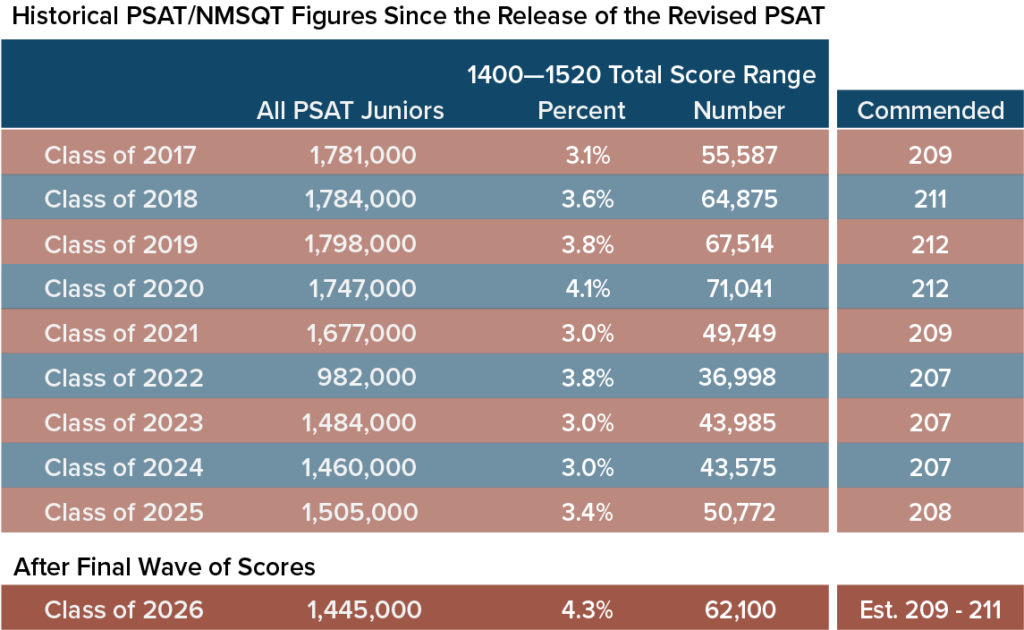
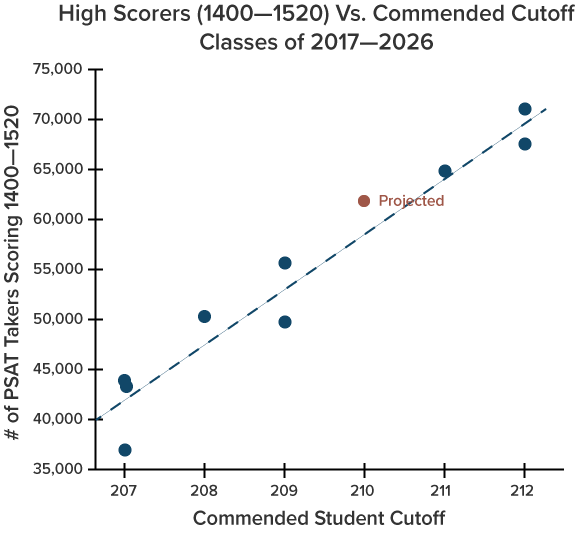
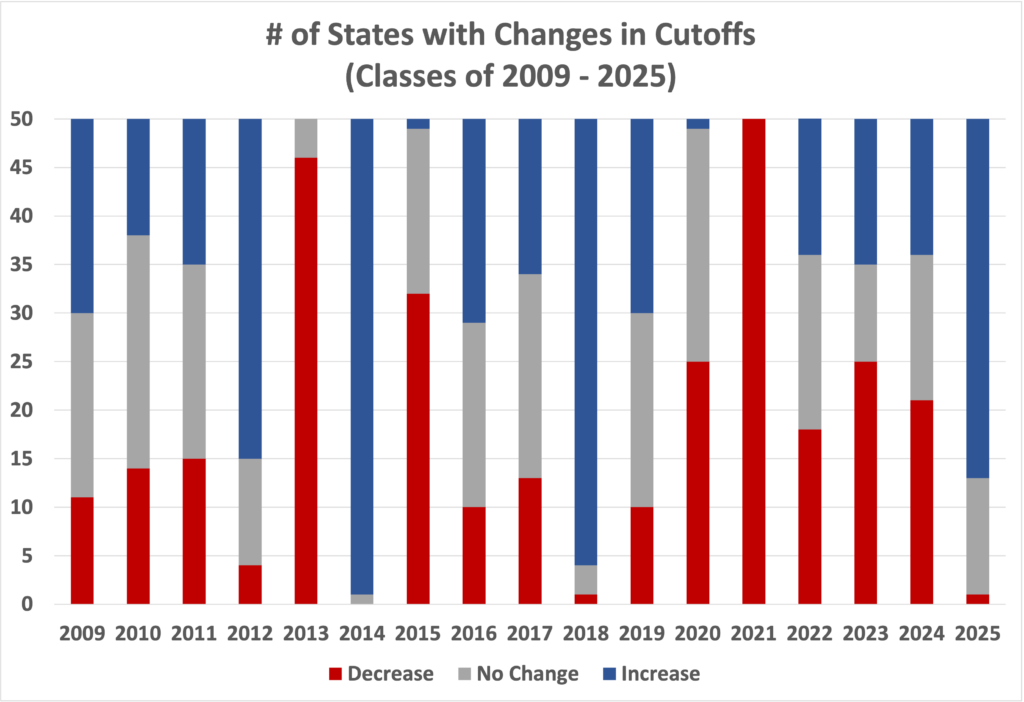
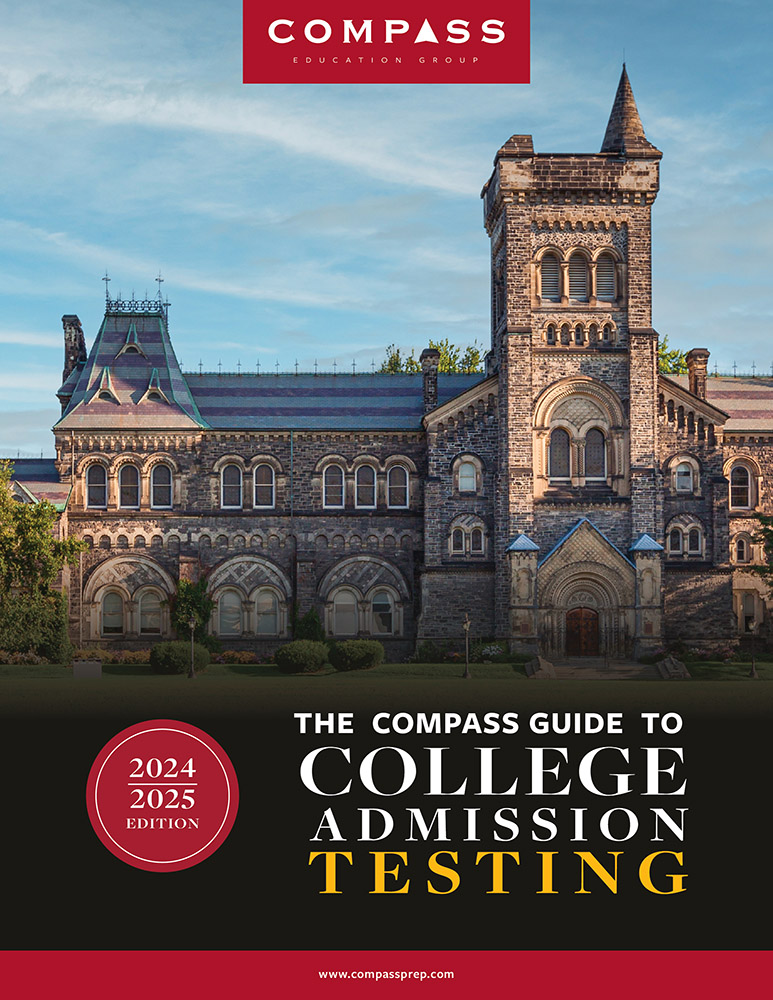
Received Semi Finalist notification in Arizona with a 221
Congratulations to you and your student, and thanks for sharing!
Hi! Do you know if that was the cutoff?
Art,
Is it possible that there is some differentiation between PSAT SI and Alt Entry SI this year? Or difference in SI based on Verbal/Math SI combination this year?
I know it sounds crazy, but I am seeing conflicting information for 220 CA, 219 TX and 215 OH on other sites.
Has misinformation been normal early on (in prior years)?
Mina,
The SI calculation is sacrosanct, so I’m sure that’s not the issue. It’s not impossible that NMSC decided to distinguish between PSAT SI and AE SI, but it’s a stretch. SAT scores don’t come with a nice Selection Index tab, so it’s also possible that some AE reporters have miscalculated their SIs. Things are always coming fast and furious around this time, so conflicting information is not that unusual. I’m a broken record on the topic, but I wish National Merit would join the 21st century and notify students electronically.
Do you know of people that got in with 220 in CA
Aaron,
I do not. So far I’ve had the report of a student missing out at 220.
Was this AE or PSAT? I think from the conflicting information it might be reasonable that they distinguished.
Hi, Art. Chances for a 221 in TX? Heard nothing yet. I hear that a 219 made it on some sites, but I hear that a 219 did not make it on other sites. On pins and needles!
I wish we had something definitive. Based on some of the reports out of high-cutoff states, I think you’re solid with a 221 in Texas.
How about 220 in TX
I’ve seen mixed reports elsewhere about Texas. A 220 is still on the bubble.
I got the letter. PSAT@220.
That’s great news, Bryan. Thanks for the confirmation.
One of my friends made it (confirmed) with a 221 in Texas
Thanks, AM!
To give you a start on Washington, a 222 was confirmed as SF today for my friend’s kiddo.
Thank you for passing that along, Shannon.
Anything about Michigan yet?
Nothing directly, Jakub.
Have you heard anything from MN? My son is a 221. His school hasn’t heard which I think is a bad sign.
Not directly. A state hitting a new record in a rough year would be a very unusual circumstance. A school not yet receiving NM information or having it in the wrong person’s mailbox, on the other hand, is almost standard operating procedure at this time of year. Don’t let the anxiety win!
Do we have a rough estimate of how many Semifinalists there are this year, with all the Alternate Entrants?
Russ,
Since NMSC used Alternate Entry SAT scores in calculating cutoffs (see Comment above yours), the total number of SFs will probably not change much. I’d estimate 16,500 – 17,000. Their letters refer to 16,000, but they are infamous for using round and outdated numbers in those circumstances. In any event, no substantial change.
Thanks Art!
Two things:
1. I’m not sure which comment you’re referring, could you point it out?
2. I thought that Alternate Entry scores were typically not used to determine cutoffs? Has this changed? I expected far more than 16-17,000 Semifinalists this year, so am surprised to hear this.
Russ,
The threading on this blog is horrible, sorry. It’s from David at 6:07am today. You are correct that AE scores were not *typically* used to determine cutoffs. Apparently NMSC decided that keeping that policy in such an atypical year would lead to crazy anomalies (I’ve previously written about the ridiculous cutoffs it would have created in California, for instance). So AE scores were considered in calculating cutoffs.
Has there been any information on the maine cutoff.
Nothing. Sorry, Kai.
Art,
My son qualified from Kansas with 217. Don’t know the score of other Kids who qualified from his school
Congratulations to your con, Anu. I just got a separate report of a 215 qualifying in Kansas, too.
Hi Art. 215 qualified in Kansas.
Thanks, Kevin! I imagine congratulations are in order.
I can confirm that 215 qualifies in KS, but I don’t believe a 213 did, so it should be 214-215.
Thank you, Lincoln.
Any updates this morning? Specifically looking for information on Indiana. Thanks so much!
Mindi,
I’ve seen reports of 211 elsewhere on the web, but I don’t have any direct reports.
Thank you. Sitting at 213 over here. I guess we will keep hope for a little longer 🙂 Much appreciated.
How likely is it that Missouri will fall to a 214 cutoff? It is currently estimated at 215 and I scored a 214.
Kyle,
215 is already low for Missouri, but I’d hold out hope.
My California student with a 221 was notified yesterday that she made SF. Curiously, the same day we received a recruitment mailer from U. of Oklahoma targeted to parents of Semi-Finalists. How is it that they knew before we did?
Parent,
Congratulations! And thanks for confirming that 221 qualified in CA. College Board typically sells lists based on score breaks and not on NM status. It’s possible that NMSC sells the list to Oklahoma, but it’s also possible that Oklahoma is simply buying a cross-section of names at >1450 (or similar).
How likely is NJ at 222? I saw one reddit post claiming he got notified with a 221 index, but nothing more.
I saw that, too, njparent. I don’t know any more information than you do. If correct, it’s pretty important, since NJ has traditionally set the high-water mark for the country. I’d be cautiously optimistic at 222.
Many many schools here cancelled the psat, so I do think a drop is possible. Depends how alternate entry ended up being treated.
Son got his letter today. 222 qualified for NMSF in NJ.
Congratulations, NJP! If your son has any friends with 220s or 221s, please encourage them to stop by with news.
Hi Art,
This is just a clarification, but Puerto Rico is considered a territory right? I have a 216 SI so I can’t afford to have it considered outside of US. Thanks!
Ross,
That’s right. And you’ll qualify as a Semifinalist. Congratulations!
Hi Art,
I’m a little confused why people are comparing this year’s cutoffs with Class of 2021 cutoffs since you’ve methodically shown that the Class of 2021 cutoffs were outliers or anomalies. Shouldn’t we be comparing this year’s cutoffs with Class of 2020 or Class of 2019 cutoffs (or some kind of average)? My prediction is that most state cutoffs will be one point less (or more) than the Class of 2020 cutoffs. Given that logic, what are the odds that Texas will come in at 220? Thanks.
Nascil,
You make a good point. It’s natural, though, for people to have a “recency bias” and think about the most recent set of cutoffs. The fact is that any comparison is a shot in the dark this year. The word unprecedented gets overused, but I think a year when there is a January PSAT and NMSC has to change their rules about Alternate Entry can safely be called unprecedented. That’s why I’m hesitant to lay odds for or against a score close to the bubble. Hopefully we find out soon enough.
Hello Art!
What is the Ohio cutoff and how accurate do you think it is. Should I hold up hope if I have a 215 SI?
Thanks!
Riya,
Based on reports, the Ohio cutoff is 215 or lower. Those reports usually prove accurate, so I’d be cautiously optimistic!
Art,
Thank you so much for your updates. My so.n qualified with a 223 in TX. We just received an email from the school.
Congratulations to your son, TM!
What are the chances a 219 qualifies in Georgia?
Abhinav,
There is not a lot to go on at this point. I think GA is likely to end up at 219 or 220. Good luck!
Do you see Kansas dropping to 213? It would be a one point drop from last year so would it be potentially feasible?
Nate,
Yes, I think it’s possible.
Should I still maintain some hope for 220 in CA. Some have stated they got it, others said no they haven’t got anything.
Steve,
Do you mean “got it” in that they received an NMSF letter with a 220 score or do you just mean that some California students have already received notifications? I haven’t personally heard of the former, but that’s not to say it didn’t happen. I’d hold out hope until we get more clarity!
I’ve heard that 220 qualified based on home school letter from the same dude that leaked 217 of Florida but I haven’t heard back from the parent who said 220 didn’t make it. The same person that said 220 here, also said on college confidential and Reddit. I’ve contacted them for answers but haven’t received anything
Thanks, Steve. I’m going to update the post with some of this information.
Hello Art,
I also have a quick question on California. I see ‘California 221 or 222’ instead of ‘<=222'. Is there any specific reason? Thanks!
Anon,
I got a report from a student (parent) with a 220 who did not qualify. I’m adjusting the post so as not to be misleading. Hopefully we hear from more Californians.
John,
My info comes from a school that may have had no one with a 218, so it’s possible the reports of a 218 qualifying are correct.
Texas is confirmed 220.
Thanks, Anon. That will be a relief to many.
Mississippi – semifinalist status is above 212 (so 213 or above). One person reported being confirmed as to not getting it while having a 212.
Reported on r/psat
Thanks!
So is 213 still in play
Hi Art, seems weird that CA, with the most number of SF hasn’t leaked more – is this your experience? Do you have a lot of confirmations of that 222 and we are just hoping for a 221 to pop up (we are, LOL!) I can’t see the message about them adding the AE for finalist number but am wondering if that, too, is confirmed? Thanks so much
It’s frustrating — especially since I live in California — but not that unusual. No, there is nothing to make me think it’s 222. In fact, there are conflicting reports even about 220. We may just have to wait a bit longer.